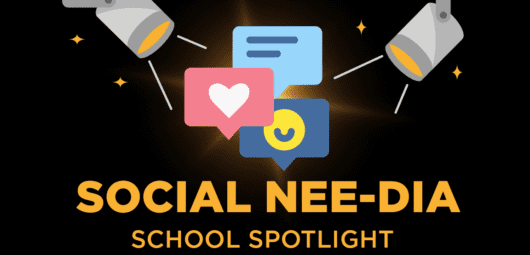On the Drawing Board: A Peer Observation Tool from NEE
Peer observation can provide professional growth that far exceeds what teachers gain through traditional professional development sessions. Teachers who participate in a peer observation process can experience improved instructional skills regardless of whether they are the teacher being observed or the one who is observing. In previous blogs on peer observation, we addressed the research findings, the benefits offered, and the practices recommended for its effective use. Part 3 in the series explores the ways that a NEE tool could support peer observation experiences for teacher growth.
Current Realities of Peer Observations
Presently, the majority of our member schools using a peer observation process do so with their beginning teachers and mentors. The assignment of a mentor for beginning teachers is mandated in Missouri and many other states. These teachers and their mentors meet routinely throughout the school year for peer observation and coaching. Most schools currently use an informal process for peer observation. Many schools also report utilizing another informal method of peer observation called the pineapple chart. In this system of classroom visits, one teacher invites others to observe and provide feedback on their use of a specific instructional strategy, tool, or resource.
Many of our NEE member school districts tell us that they would like to increase their use of peer observation. They also favor the use of a more formal protocol to ensure that the observations support instructional improvement leading to increased student learning. The barriers they currently experience in doing so include:
- Time – It’s difficult to find time in the school day for teachers to visit other classrooms.
- Money – Teachers often need a substitute for their classroom when observing another teacher.
- Organization – Matching teachers for peer observations and setting up schedules often falls to the principal, who already juggles many responsibilities.
- Process – To ensure the greatest benefits of peer observation are achieved, the visits must be structured and processed in specific ways. Informal classroom visits that do not incorporate structured reflection do not usually lead to significant professional growth.
- Training – Teachers must learn the skills necessary to conduct observations and offer feedback to others.
- Acceptance –Teachers must be comfortable in opening their instruction to observation by other teachers.
Vision for a NEE Peer Observation Tool
As the NEE Team considered ways to help schools overcome these barriers, it became clear that a peer observation tool could be the answer. The envisioned tool would be similar to the NEE Data Tool online evaluation system in some ways but very different in others. The following priorities for developing a peer observation tool were identified through surveys and conversations held with focus groups:
- The processes of peer observation and teacher evaluation must be entirely separate.
- A method should be incorporated to select teachers within a school district to serve as model teachers for a specific instructional strategy or skill. These teachers must be willing to open their classrooms for observations or create videotapes of their teaching to be shared.
- Teachers should be able to either request that another teacher observe and provide them with feedback or identify a teacher who can model a strategy or skill they want to develop.
- There should be a scheduling mechanism to help teachers arrange and document their observations and coaching discussions more easily.
- Video options should be built into the process for three purposes:
— The use of videos for self-reflection and professional growth.
— The sharing of teacher-selected video clips with a trusted partner or small group to build comfort in seeking feedback from others.
— Increased opportunities for teachers to observe others by viewing videos of their peers. This can be especially helpful when a teacher is the only one in a content area, teaching schedules don’t match up, or there are no substitutes available. - The online organizers should walk teachers through the peer observation process to ensure that professional growth is achieved. The process includes a pre-observation discussion about the focus of the observation, data collection and note-taking during the observation, and a post-observation conference for reflection and coaching.
- Building administrators will need a method of oversight for the process that does not intrude on the teachers’ experience.
- Reporting features for teachers and school building and district administrators should be offered to track the data surrounding the use of peer observation.
- A means of creating and accessing the repository of videos that results from peer observations should be incorporated. The videos could be made available to other teachers in the same school district if permission is given by the recorded teacher. Ideally, some videos might be shared across the NEE network so that more teachers could benefit from the collected teaching examples.
Initial training will be required for teachers who would like to participate in peer observations. NEE will provide training on topics such as the best practices of observation, pre-observation conversations, identifying a focus and parameters, observer etiquette, data collection, providing effective feedback, peer coaching tips, the best practices of self-reflection, and creating an action plan.
A Proposed Prototype of the NEE Peer Observation Tool
Although the envisioned tool is still on the NEE drawing board, the following visualization highlights the planned components and flow of the tool.
First, we’d like to incorporate a matching app. This component allows a teacher to filter the classrooms in their building or district that are available for visits by grade level, content area, and the instructional skills and strategies to be observed. The teacher selects a classroom to visit and contacts the teacher through the app to set up a date and time for the observation. It may be possible for several small districts to set up a cohort for peer observations, and observations could also be arranged outside of the matching app.
Once an observation has been scheduled, the teacher creates an observation organizer by entering some information and selecting whether the observation is going to be a self-reflection, an observation of a peer, or a request for feedback from a peer. Once created, the organizer produces a template to track:
- the focus of the upcoming observation and things to keep in mind as discussed during the pre-observation conference
- data and notes recorded during the observation by the observing teacher
- reflections made during the post-observation discussion
- an action plan for the next steps to be taken
Finally, reporting features will be provided. The person who creates the organizer will be the owner of it and can share it, if desired. Some data will be made available to the teacher, and some reports for building and district administrators will also be provided. We plan to conduct a small pilot of the peer observation training, protocol, and organizer during the 2021-22 school year. The results of the pilot will inform revisions of the protocol and the development of the online tool components. This new offering from the Network for Educator Effectiveness will be available for purchase as a companion tool for NEE member schools or to be used on its own by non-member school districts. We are eager to hear your thoughts on peer observation, its benefits, the use of a protocol, and how an online tool might support your school in using peer observations for professional growth. Contact us with your feedback and questions at nee@missouri.edu.
The Network for Educator Effectiveness (NEE) is a simple yet powerful comprehensive system for educator evaluation that helps educators grow, students learn, and schools improve. Developed by preK-12 practitioners and experts at the University of Missouri, NEE brings together classroom observation, student feedback, teacher curriculum planning, and professional development as measures of effectiveness in a secure online portal designed to promote educator growth and development.



